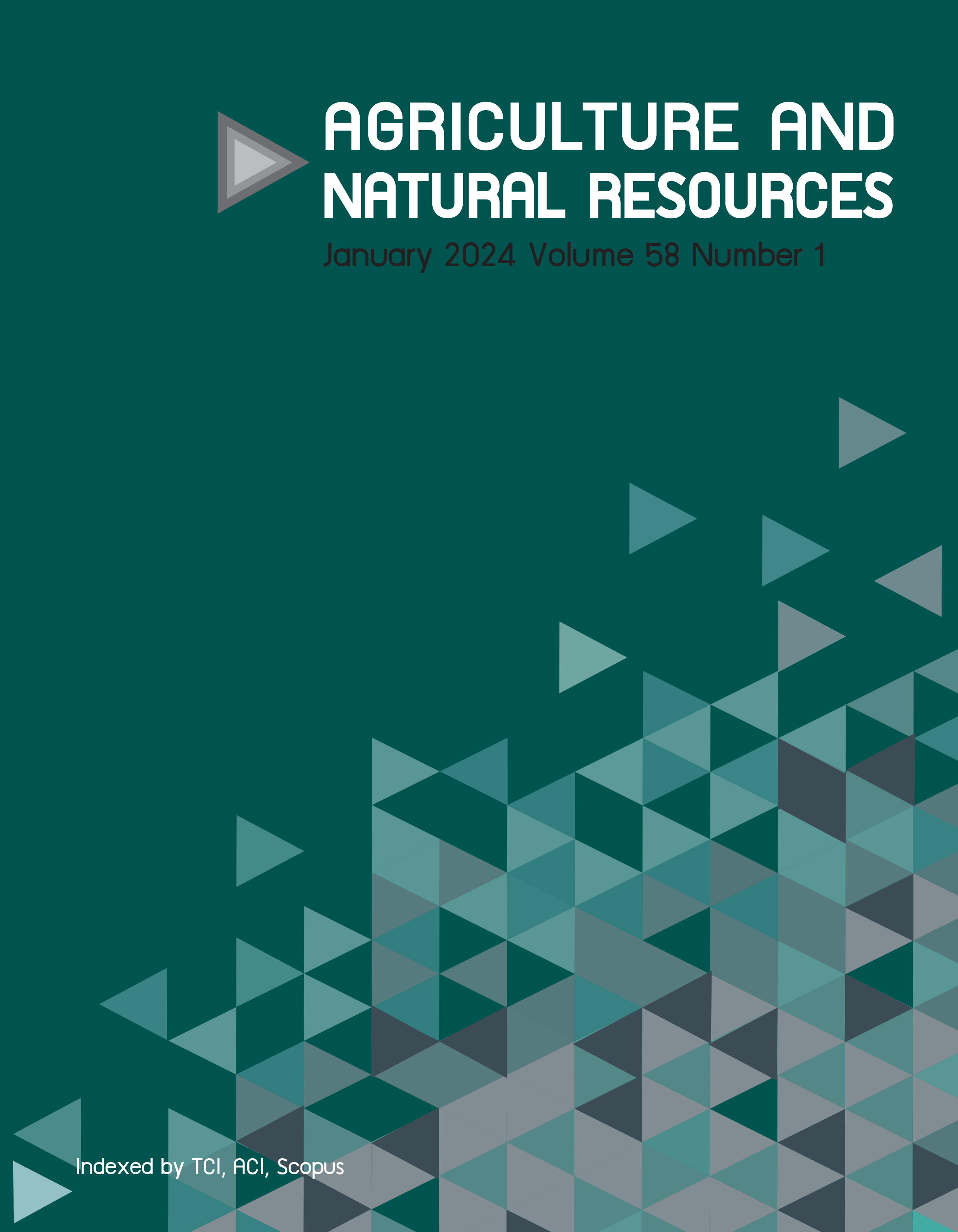Carbon sequestration and surface energy balance measurement using eddy covariance technique for mangrove forest under influence of treated domestic wastewater, Phetchaburi province, Thailand
Keywords:
Carbon sequestration, Domestic wastewater, Eddy covariance, Mangrove Forest, Surface energy balanceAbstract
Importance of the work: There is a growing demand for the quantification of carbon sequestration.
Objectives: To quantify the flux movement of carbon dioxide within the King’s Royally Initiated Laem Phak Bia Environmental Research and Development (LERD) Project in Phetchaburi province, Thailand in a natural mangrove forest receiving treated domestic
wastewater.
Materials & Methods: The initial study used the eddy covariance technique to quantify the carbon dioxide fluxes within the study location.
Results: The mangrove forest served as a carbon sink, sequestering an estimated 19.94 tCO2/ha/yr. However, during the day, the forest’s role as a secondary treatment system led to the release of CO2 into the atmosphere due to the absence of photosynthetically active radiation at nighttime. However, this research also investigated the surface energy balance based on the calculation of the closure gap of the latent, sensible and ground heat fluxes, which equaled 0.62, indicating that the energy use in the mangrove canopy closely resembled that of a natural forest.
Main finding: Understanding the CO2 flux in the treated mangrove forest contributed to the expanding body of research on the “Blue Carbon” dynamics in mangrove forests.
Downloads
Published
How to Cite
Issue
Section
License
Copyright (c) 2024 Kasetsart Universityonline 2452-316X print 2468-1458/Copyright © 2022. This is an open access article under the CC BY-NC-ND license (http://creativecommons.org/licenses/by-nc-nd/4.0/),
production and hosting by Kasetsart University of Research and Development Institute on behalf of Kasetsart University.







